When it comes to weathering storms, both literally and metaphorically, the rail shipping industry encounters unique challenges. 2023’s hurricane season, as vendors and logistics professionals know, is a critical period. With potential damage to infrastructure, the disruption of conventional supply channels, and the financial setbacks that come with it all, preparedness is an absolute necessity. This post aims to provide a comprehensive plan for rail shipping professionals to prepare for the imminent hurricane season.
Understanding the Hurricane Season
Diving into the specifics of hurricane season, we discern that this period lasts from June 1 to November 30. The most severe storms, with higher wind intensity and heavier precipitation, occur during the peak period from mid-August to late October.
Throughout this period, the dominant regions exposed to these storms include the Atlantic Ocean, Gulf of Mexico, and the Eastern Pacific Ocean. The rail shipping industry, with its extensive networks and operations spread across these areas, finds itself squarely in the path of these severe weather systems annually.
Atmospheric Conditions and Their Impact
The core aspects of hurricanes that are detrimental to rail shipping are high winds and heavy rainfall. NOAA’s Atlantic Oceanographic and Meteorological Laboratory mentions that hurricanes can generate wind speeds as high as 150 mph. This intensity can result in extensive damage to freight rail infrastructure, including rails, bridges, and other core transportation structures.
Significant precipitation exacerbates these effects. Hurricanes can produce rainfall amounts of 6 to 12 inches over a widespread area, and in extreme cases, rainfall totals can reach 40 inches or more. Flooding can wash away ballast, dislodge rail lines, and render integral parts of the rail network inaccessible or inoperable.
The operational implications of these conditions include standstills, significant rerouting, and an inevitable surge in costs. Historically, the economic cost of hurricanes impacting the U.S. freight network directly hits the rail shipping industry, with effects rippling across the globe through complex supply chain mechanisms.
Inference and Actuation
Reviewing the aftermath of Hurricane Katrina in 2005 can offer quantitative insight into these consequences. Core railway lines, such as the CSX line which ran along the Gulf Coast, took months to restore to functionality post-hurricane. At New Orleans, CSX interchanges over 1,000 cars per day with the western railroads, and financial techniques estimated Katrina’s total impact to the US freight transportation system to be in the hundreds of millions. This cost primarily arose due to increased transit times, rerouting, and freight transfer to more expensive modes of transportation.
Understanding the specific elements of hurricane conditions and the potential impact on your operations allows for more profound, data-driven decisions. Appropriately assessing these risks and scaling your hurricane preparedness accordingly is an action of utmost importance. This methodology ensures a nuanced and knowledge-backed approach to securing your rail shipping operations against formidable weather eventualities.
Historical Impact of Hurricanes on Rail Shipping Operations
Historical data provides detailed insights into the tangible array of challenges that the rail shipping industry confronts during the hurricane season. It is paramount to scrutinize these events to accurately forecast potential adversities and bolster resilience in forthcoming seasons.
The Devastation of Hurricane Irma
Hurricane Irma, a Category 5 hurricane that struck in 2017, serves as a cogent illustration of the potential cataclysms. This hurricane adversely impacted the freight transportation industry, resulting in losses estimated between $2.5 billion and $4 billion. With a diameter of over 400 miles, nearly the width of the entire state of Florida, its magnitude and path led to extensive infrastructure damage and consequent operational shutdowns.
Crucially, this included large-scale impairment to critical rail shipping infrastructure. Rails, bridges, and signal systems were rendered inoperative or completely destroyed. Consequently, there was a substantial decrease in rail shipping activities, not just because of infrastructure damage, but also due to the preemptive closure of terminals and diversion of trains. This disruption had cascading effects on the supply chain, inducing delays for customers and exorbitant costs from rerouting freight and making reparations.
The Havoc Wrought by Hurricane Harvey
Just weeks before Irma, in August 2017, Category 4 Hurricane Harvey wreaked havoc in Texas. The hurricane had an astounding impact, leading to unprecedented flooding that caused significant casualties and infrastructure damage.
This disaster had serious repercussions for the rail shipping industry in particular, causing considerable delays and disruptions. The rail network in the region suffered extensive damage due to flooding and high winds, affecting key railway lines. Additionally, railway equipment and assets in the vicinity of the storm were directly damaged.
Harvey’s impact was felt beyond the borders of Texas. Amid the destruction, trains were halted within and near the region, causing large-scale disruptions to operations. The freight destined for Texas faced delays or was rerouted, both translating into additional costs. Even after the storm passed, the recovery of all rail functions took weeks due to extensive infrastructure damage.
Reflection and Future Preparedness
Examining these historical events, it is clear that hurricanes can drastically disrupt rail shipping operations, causing immense economic damage. Understanding the specific impacts of these events is a key step towards developing effective strategies to mitigate the risk and impact of future hurricanes.
Through effective preparedness, strategic planning, and continuous technological advancements, the rail shipping industry can fortify itself against such adversities and ensure business continuity even in the face of severe weather challenges.
Anticipating the 2023 Hurricane Season
The upcoming 2023 hurricane season is anticipated to be near-normal, as per the predictions from seasoned meteorologists. Though not overly above average, this projection still indicates a possible risk for direct hits on US coastlines, leading to potential disruptions in rail shipping operations, infrastructure degradation, and a potential slowdown in cross-country transportation of goods.
Predictions for 2023
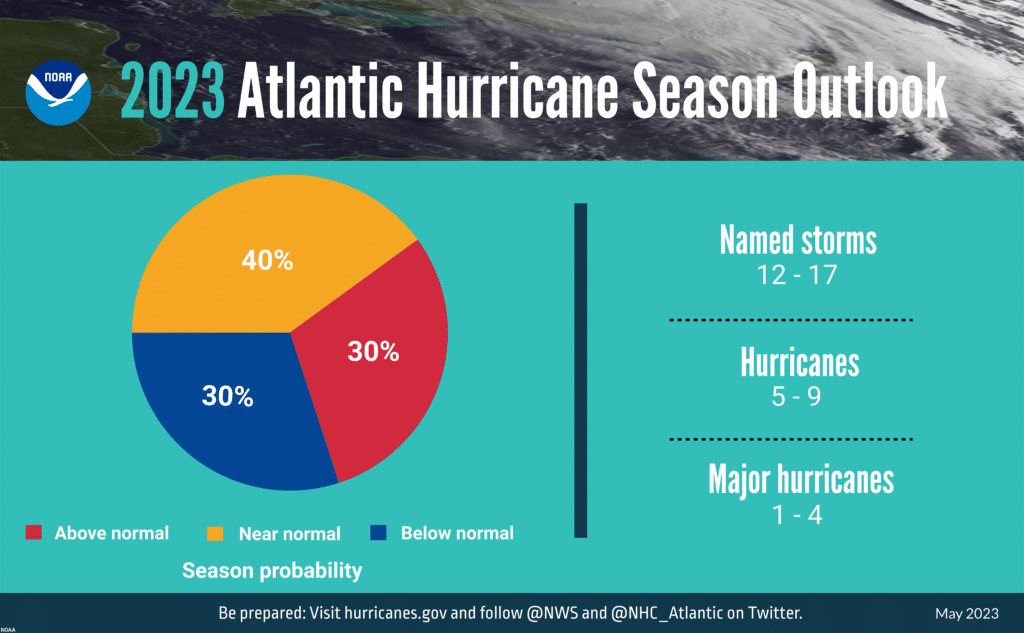
The forecast for the 2023 hurricane season is based on various environmental factors such as oceanic-temperature anomalies, atmospheric-climate oscillations, and other unforeseeable variables. NOAA’s Climate Prediction Center predicts that the Atlantic hurricane season will have a 40% chance of near-normal activity, a 30% chance of an above-normal season, and a 30% chance of a below-normal season. By factoring in these predictors, meteorologists provide the rail shipping industry with essential information, thereby emphasizing the need for a well-thought-out risk management strategy.
Anticipated Implications of the Near-Normal Hurricane Forecast
Given the context of near-normal hurricane activity in 2023, it’s important to outline the potential impact on the rail shipping industry:
- Moderate Operational Disruptions: While the risk of severe disruption is reduced in a near-normal season, periodic storms are still likely to cause some operational disruptions. The possibility of storms making landfall does exist, which can necessitate delays, rerouting, or cancellation of shipping routes. As a result, the rail shipping industry may need to employ contingency planning strategies to reduce service disruptions and potential supply-chain disturbances.
- Infrequent Infrastructure Damage: With lower storm frequency and intensity, the stress on rail-network infrastructure may be lesser; however, rail tracks, bridges, and terminals still face some degree of risk from routing storms. High-wind gusts, flooding, and debris can still lead to a need for regular maintenance and repair, adding to operational costs.
- Fewer transcontinental Shipping Delay: As fewer severe storms are predicted, the potential for widespread bottlenecks may reduce. Nevertheless, the storms that do occur can still impact cross-country rail shipments, leading to slower nationwide logistics planning and potentially requiring contingency plans.
Overall, a near-normal hurricane season still poses challenges but also reduces the scale of potential disruptions when compared to an above-average season, allowing the rail shipping industry to strategize accordingly.
Strategic Preparedness: The Cornerstone of Navigating the Hurricane Season for the Rail Shipping Industry
The unsettling impact of hurricanes in our modern logistics landscape is vast and multifaceted, often rippling through the rail shipping industry with a grave magnitude. Beyond evident interruptions in shipment schedules and considerable operational costs, extensive damage to the infrastructure holds the potential to trigger a cascade of repercussions. Moreover, downtime-induced financial losses, the economic burden of rerouting, and looming penalties for non-delivery of goods must be factored into a comprehensive risk assessment.
Systematic Approach to Navigating the Hurricane Season
To temper the risks posed by the relentlessly tumultuous hurricane season for the rail shipping industry, a strategic approach is absolutely indispensable. This necessitates a four-fold process, encompassing Risk Assessment, Strategic Planning, Plan Implementation, and Recovery Planning.
- Risk Assessment: The initiation point of mitigation strategies lies in recognizing inherent vulnerabilities within your operations and infrastructure. This process must entail an intensive analysis of geographical locations within your operational landscape that are most susceptible to hurricane strikes, and a thorough evaluation of your infrastructural components, particularly assessing if aging assets can endure the onslaught of a hurricane.
- Strategic Planning: A plan devised to secure and safeguard identified at-risk assets forms the backbone of your disaster management strategy. Essential components to consider include robust communication systems to uphold seamless correspondence pre, during, and post-hurricane, alongside meticulously drafted rerouting plans to circumvent disruptions to the delivery schedule.
- Plan Implementation: With the onset of a hurricane warning, the immediate activation of your disaster management plan is pivotal in minimizing potential damages. This aspect not only underscores the imperative need to mitigate operational losses, but also places paramount importance on ensuring personnel safety and well-being.
- Recovery Planning: The aftermath of a hurricane necessitates a resilient recovery planning mechanism. The primary objective post the natural disaster remains the swift reestablishment of operations, minimizing any further potential slide in revenue.
In summary, an insightful cognizance of your operational landscape, preemptive risk mitigation plans, and an agile recovery strategy encompass the integral trinity guiding your preparation for hurricane seasons. Your endeavors in this direction would ascertain that your rail shipping operations withstand the trials of a hurricane season with grace and resilience, effectively balancing operational continuity and financial stability.
Facing a near-normal hurricane season still requires careful planning. It’s key to have a solid disaster management strategy in place to deal with upcoming weather patterns. Being well-prepared is critical to lessen damage, reduce financial losses, and avoid significant disruptions to daily operations.
We strongly recommend starting your preparation for hurricane season as soon as possible. Taking a proactive approach will benefit your operations during the upcoming hurricane season. Being ready today will help you handle the challenges of tomorrow.
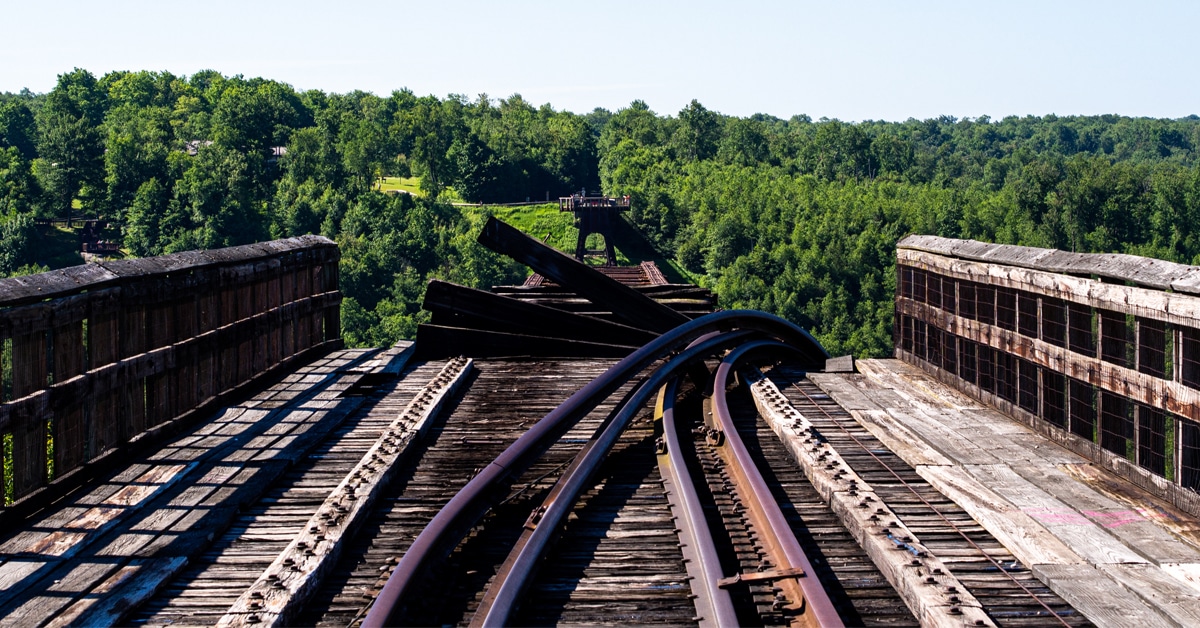
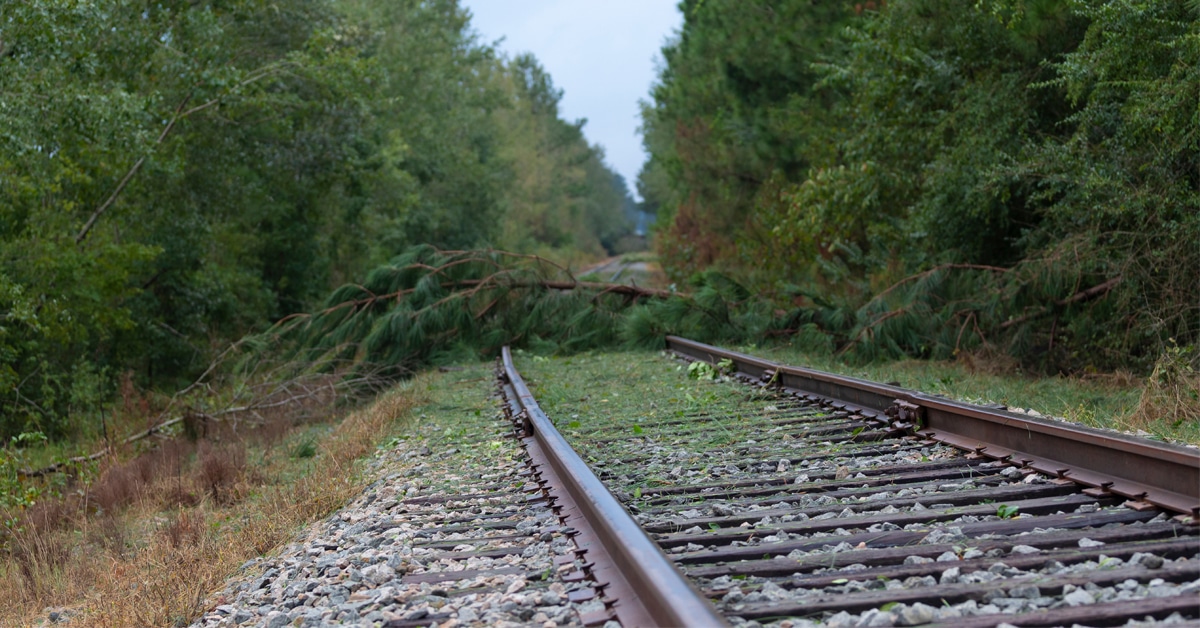


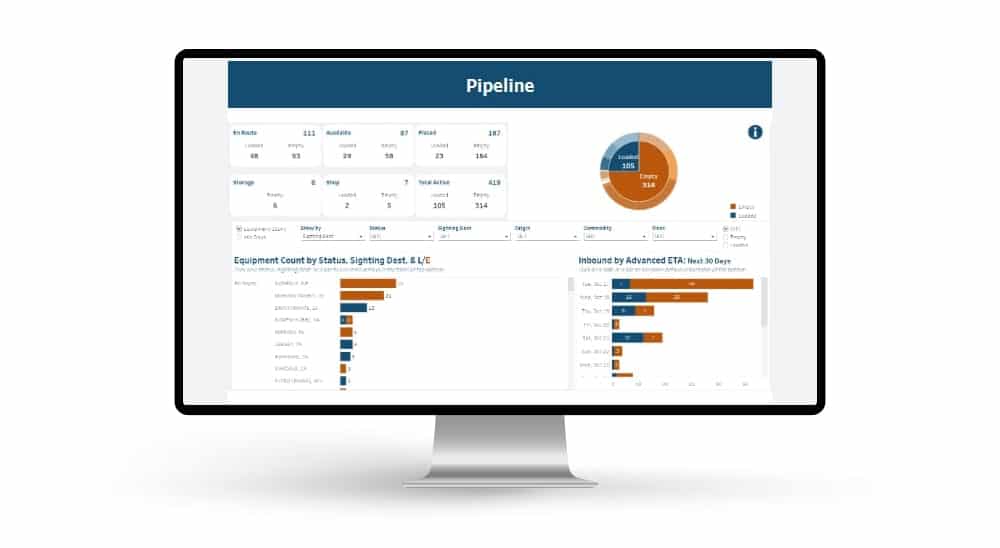 Automated exception reporting of the railcar tracking data makes it easy to identify and troubleshoot jeopardized shipments, thereby enabling you to provide better service to your stakeholders.
Automated exception reporting of the railcar tracking data makes it easy to identify and troubleshoot jeopardized shipments, thereby enabling you to provide better service to your stakeholders.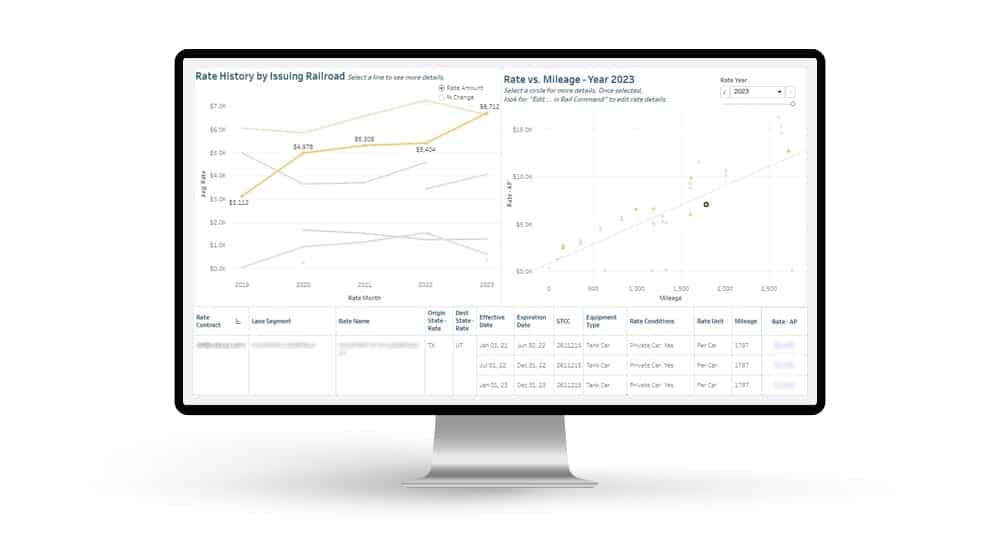 Receive notification of pending rate expirations. Tariff changes and fuel surcharges can be automatically updated.
Receive notification of pending rate expirations. Tariff changes and fuel surcharges can be automatically updated.